Boomboxes are, by definition, excessive. With their deafening bass thud and dazzling chrome dials, these electric beasts are heavy enough to tone your biceps. Also known as “ghetto blasters” or “jamboxes”, they rose to fame in the 1980s along with hip-hop, flourishing as a tool for sharing and mixing the latest beats. Yet despite their widespread popularity, the innovators who conceived of these devices are still largely unknown, consigned to anonymity by the corporations that manufactured their creations.
Miles Lightwood hopes to change that. He’s the founder of Boomboxラジカセ Creators, an online archive and forthcoming documentary film devoted to identifying the individuals behind the most successful boomboxes of all time. So far, Lightwood has only located a handful original designers and engineers, a few of whom are already deceased, but he hopes that with the help of the Internet’s global community, more will be found before they pass away.
Compared to today’s sleek micro-gadgets, boomboxes are like electronic dinosaurs, dated as much by their ludicrous size as their outmoded technology. Beginning in the late 1970s, companies recognised that buyers wanted their radios louder and more dynamic, so they made sure each model could project a solid mix of treble, midrange, and bass, while offering options for recording and editing, too. This was what made the analogue boxes so big, requiring huge speakers, cassette decks, a radio receiver, and up to 10 D-sized batteries, all wrapped in heavy-duty casing.
The oversized radio-and-cassette-player combos quickly became a sign of status among urban youth, who knew their models by name: The JVC RC-550; the Panasonic RX-7200; the Sharp VZ-2000. Eventually they included features like detachable speakers and keyboard synthesizers, allowing for even greater mixing capability. These monster boxes grew so large and expensive that one model, the Conion C-100F, actually included a motion detector that sounded an alarm if the box was moved.
Today, boombox connoisseurs typically swap information and compare their finds on forums like Boomboxery and Stereo2go, waxing nostalgic for the era of street parties and tape sampling that couldn’t have existed without these master blasters. With his 2010 book, “The Boombox Project,” boombox collector and photographer Lyle Owerko lamented the shift from this culture of public music-sharing to one that exists in private. “The world of sharing music in parks and on city streets now resides in cyberspace as we share in anonymity online. The boombox that marked this change from public music ‘broadcasting’ to private consumption was the JVC PC-100, a mini unit with a detachable headset. Now you could share your music in the public sphere, or keep it private by ejecting the cassette deck and plugging headphones into it.”
Lightwood is hopeful that shedding light on the origins of classic boomboxes might renew interest in the technology that facilitated this communal audio culture. We spoke to Lightwood about the world of vintage boomboxes, and why their creators are often shrouded in mystery.
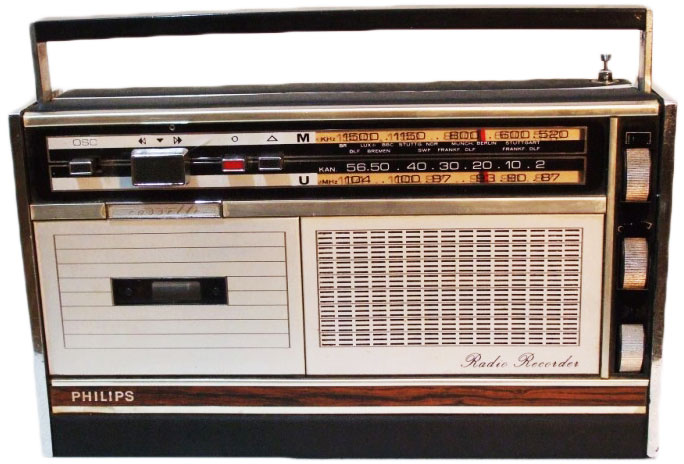
The Philips “Radio Recorder” from 1969 is thought of as the world’s first boombox.
Collectors Weekly: What makes a boombox a grail?
Lightwood: That’s shorthand for “holy grail,” meaning the most collectible or the most recognisable, the ones that have all the features that you associate with a boombox. They’re big; they’re loud; they have got all the bells and whistles.
There are certain agreed-upon grails within the community, and then everyone has their own personal grail. Take for example, the JVC RC-M90, which is on the cover of LL Cool J’s first album “Radio.” It has an amazing sound but it’s also got an amazing look, and it’s one of the most sought-after boomboxes. If you can get one, it’s going to cost you at least $US800 and a fierce bidding war on eBay or another auction website. I’ve got one of those, but personally, I focus on the Japanese boxes, which are fairly rare. I recently found one of those boomboxes that was stolen from me on eBay, not the exact same one, obviously, but a replacement in really good condition.
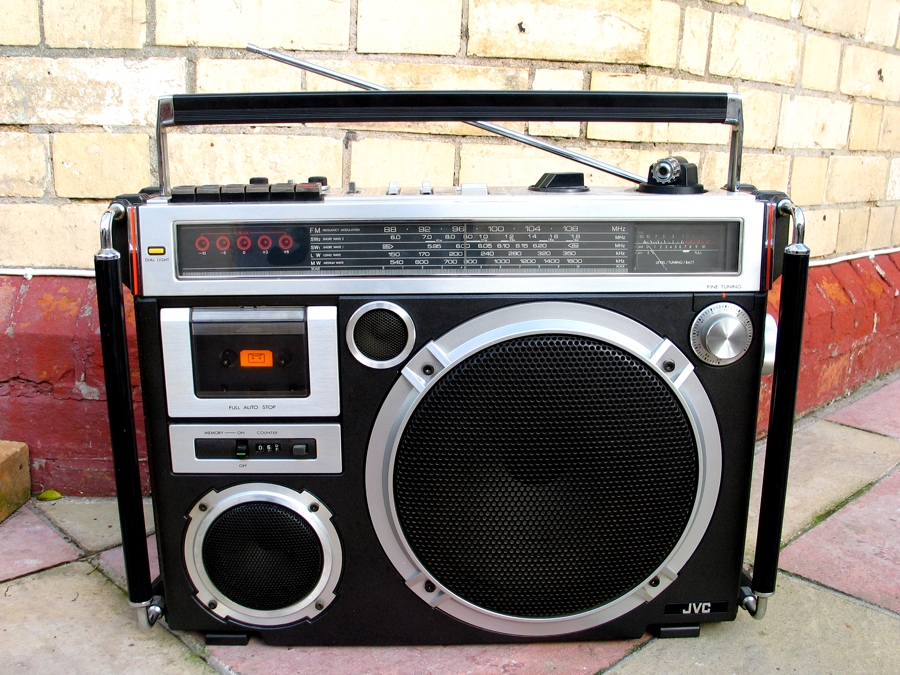
Lightwood considers the JVC RC-550, also known as “El Diablo,” as the first radio to resemble a true boombox. Via radiohier.com.
I know some collectors who have found grails like a Conion C-100F, another legendary box, on Craigslist. They went over to check it out, and they met this little old lady whose husband passed away, so she was downsizing. The couple originally bought this Conion so they could have some portable music at their cha-cha dance class or something. The box is like a time capsule: It never was a street warrior, never got beat up. I don’t have that type of story yet, but one day I will.
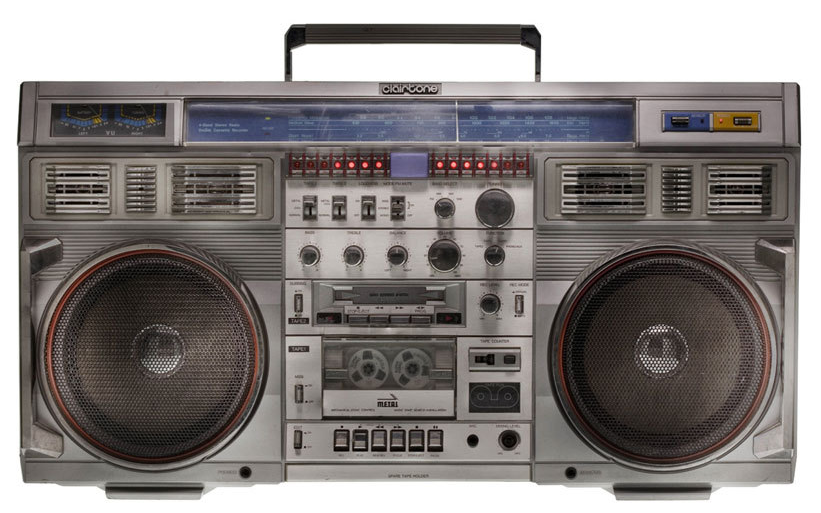
A Conion C-100F, which included an ear-splitting motion detecting alarm (visible in the upper-right corner), from the collection of Lyle Owerko. Photo courtesy Lyle Owerko.
Collectors Weekly: Why were they so big?
Lightwood: The classic grail boomboxes of the ’70s and ’80s were designed to provide a home stereo experience on the go. That meant several large speakers (typically 2 to 3 speakers ranging from 2″ to 10″ in diameter), one or more cassette decks (side-by-side or stacked), a multi-band radio receiver (typically 2 to 5 bands, but some had more), the power supply to blast it in the street (8-10 batteries), and the transformer that allowed you to plug-in at home. In the analogue era, to get the loudest sound out of big speakers required a large amplifier and other crossover electronics that occupied quite a bit of physical space within a box.
Transporting all these components safely and with style required a sturdy enclosure that satisfied both aesthetic, sonic, and functional requirements; consequently, these boomboxes were large and heavy. Practical issues aside, a bigger, louder, flashier box got you more attention on the street — boosting your reputation — and manufacturers could charge more; so win-win. Bigger is better.
Collectors Weekly: What have we lost with the switch to MP3 players?
Lightwood: Sonic warmth and physical community. When shared in a public space, a boombox is a campfire, drawing in those nearby to enjoy a warm analogue musical experience and connecting them in a spontaneous community. Anytime I share music from a boombox in public, I meet new people, learn new stories, and everyone has a great time. Listening to an MP3 player in public just isn’t the same.
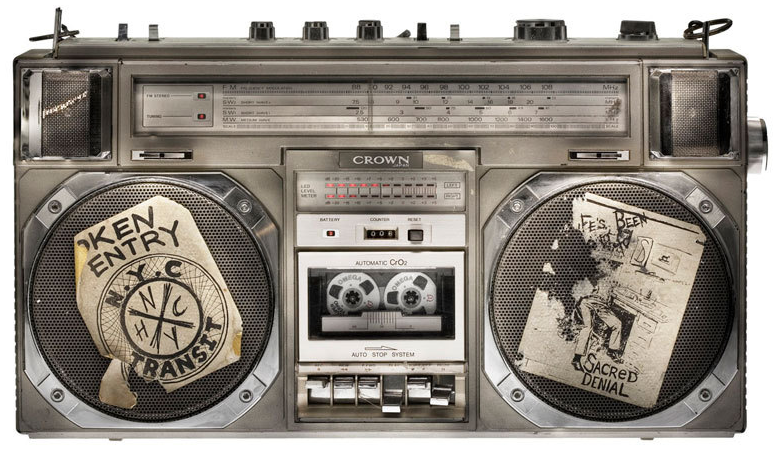
Often boomboxes were customised with emblems of a favourite band or musical style, like this punked-up Crown CSC-950. Photo courtesy Lyle Owerko.
Collectors Weekly: How do you find replacement parts for vintage boomboxes?
Lightwood: Replacement parts don’t really exist, but there are a few options, like asking other collectors for used parts, seeking out and buying a parts box, or utilising new technologies to make your own. I’m involved in the 3-D printing community, and when I was trying to repair my most recent purchase, a Lasonic TRC-931, I needed new knobs. So I started printing up knobs. But I’ve realised that the resolution of most 3-D printers means that you don’t get an exact reproduction part. You get a functional part, but it doesn’t look quite right. There are plenty of internal parts that can fail, gears and whatnot, and those you can easily print because there’s no real cosmetic requirement — it’s all functional.
Collectors Weekly: What’s been your favourite discovery related to boomboxes?
Lightwood: There are so many. Acquiring original drawings from the estate of a boombox creator, or meeting a creator who worked for one of the longest-standing boombox manufacturers.
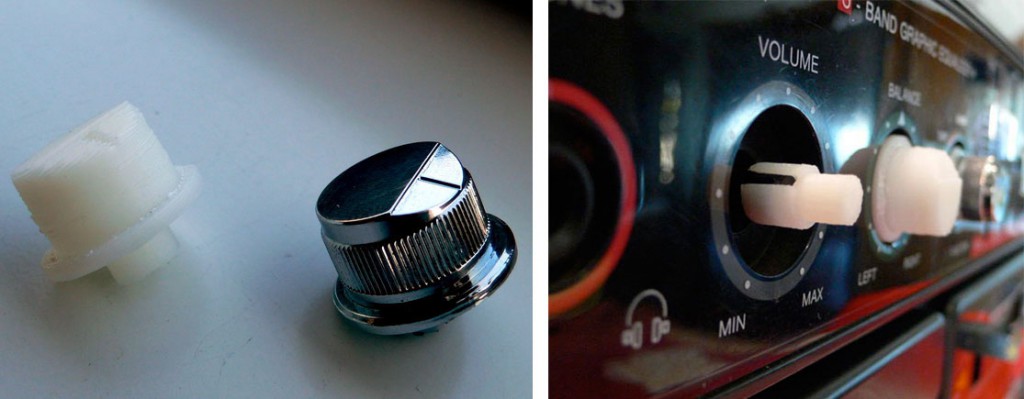
Lightwood has used his 3-D printer to create replacements for knobs and other internal parts.
Matsushita was this Japanese company that owned a bunch of different brands, like Technics, JVC, Quasar, Panasonic, and Sanyo. Over a 16-year period, Matsushita sold 4.2 million of one model boombox, the National Panasonic RQ-543. That’s a little over 700 boomboxes a day for 16 years. And that blew my mind; I had no idea they were made in such numbers.
Collectors Weekly: Why was that model so popular?
Lightwood: I don’t really know. Through my research, I realised that several of these Japanese manufacturers have museums devoted to the company founders and their popular products, which include all types of electronics and home appliances. Some guy went to the Matsushita museum and filmed a walkthrough that I found on YouTube, just panning over all the different products in there. And I thought, “Wow, there’s a boombox over there!” It was a gold boombox developed for the Middle Eastern market.
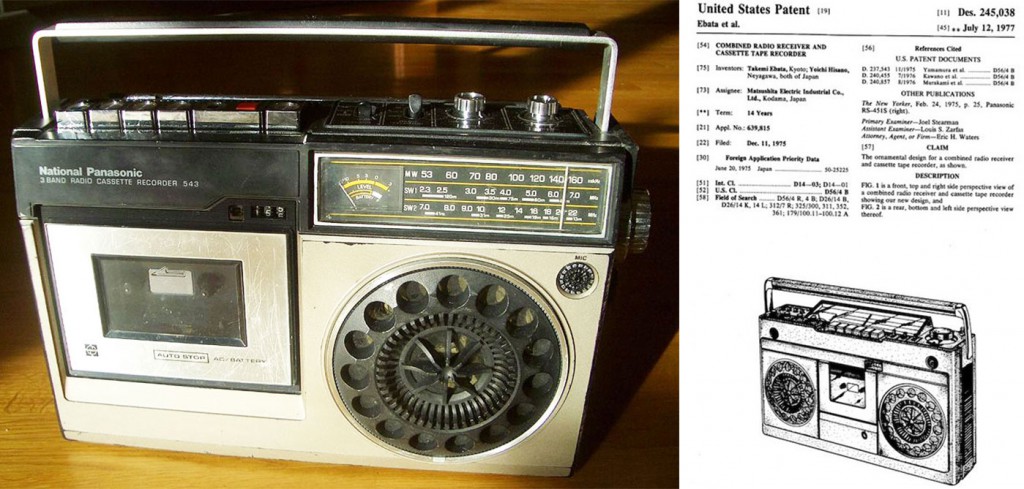
The National Panasonic RQ-543 made by Matsushita sold over 4.2 million models, primarily in the Middle East. Photo via shizaudio.ru.
If I spoke Japanese, I could write to the museum and get a little more background on it. I contacted one individual in the boombox collecting community who lives in the Middle East, in the U.A.E., and asked him if he’s ever seen this gold box. I don’t know if they were all gold, or if this is a commemorative one for the 4.2 million they sold.
This member in the U.A.E. said that most of those boomboxes aren’t even in the country anymore, because the people that would have bought them were mostly foreign laborers that were brought in to build or maintain the country’s infrastructure. Once their time was up, they would leave and take their equipment with them, so the boomboxes would end up wherever the laborers came from.
Collectors Weekly: Do you have a favourite boombox?
Lightwood: In no particular order: Victor RC-550, Tisonic PR-7000, Victor RC-M90, Amsen FK-887, Sanyo MR-X920, Sharp GF-999, Lasonic TRC-931, Victor RC-M70. I have them all, and that’s like a parent choosing a favourite child. Each has its own look and sonic personality.

The JVC PC-100 included a detachable cassette player, which began the shift to private audio devices like Walkmans.
This article has been excerpted with permission from Collectors Weekly. To read in its entirety, head here.
